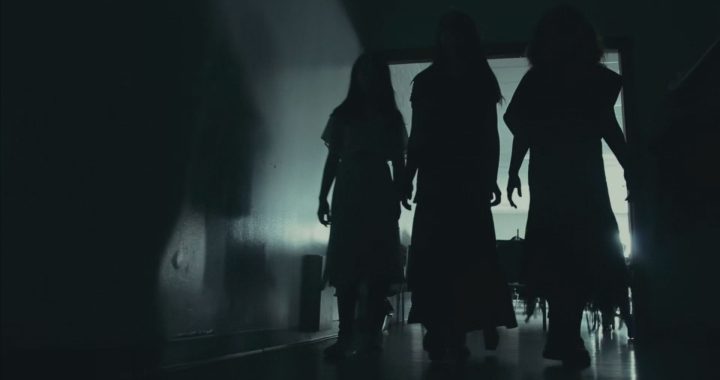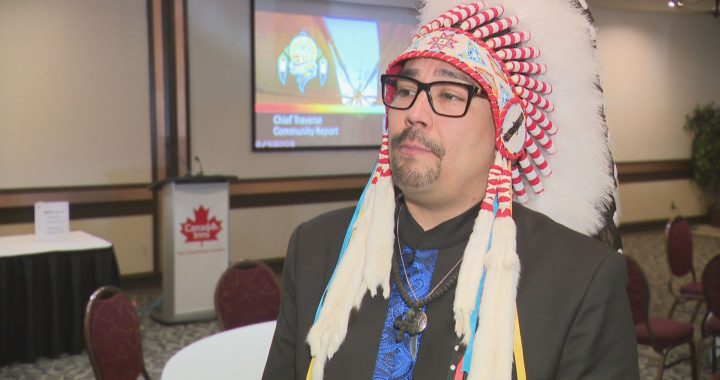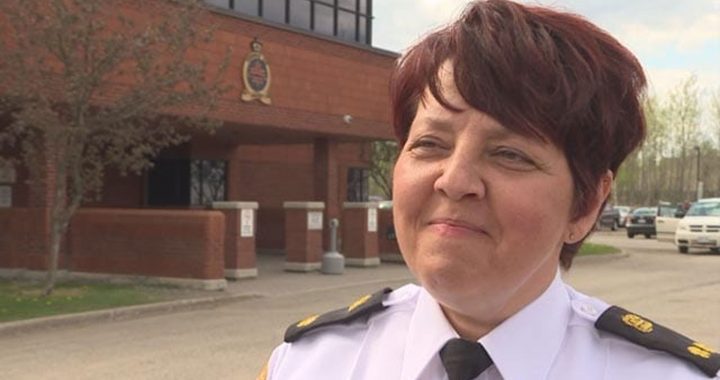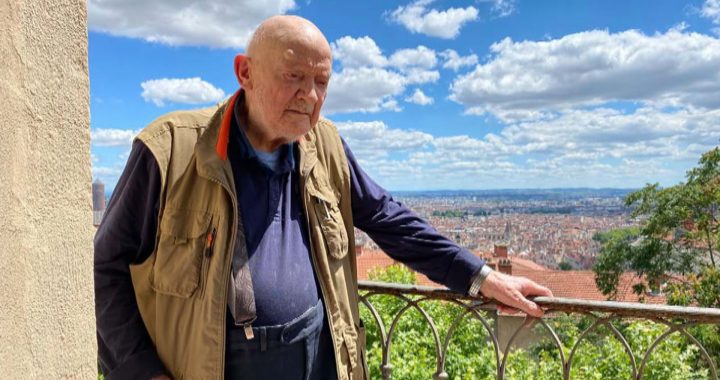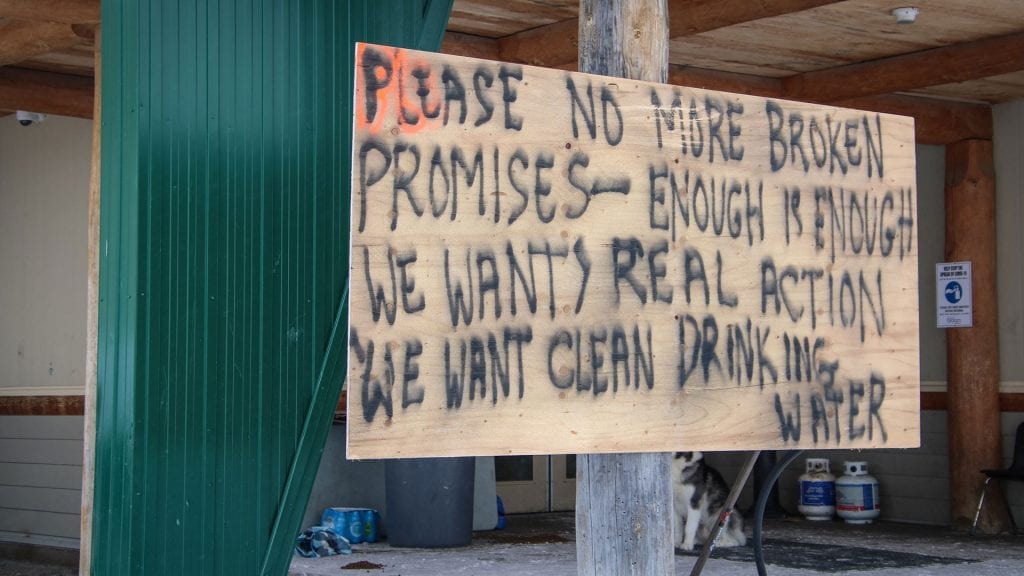
A sign posted in Neskantaga outlining the feelings of the community. Photo: Olivia Stefanovich/Media pool.
Institute for Investigative Journalism, Concordia University – APTN News – Global News
When Ed Morrison needs government approval for a project in Mitaanjigamiing First Nation he has a strategy he can use to ensure public servants take his proposal seriously.
“I can tell them exactly what needs to be done and how to do it, […] but they don’t listen,” Morrison said in an interview. “But the minute I go and hire a white man and pay him to say the same damn thing, then ‘Here you go, […] we’re going to fund this.’ A lot of these people have a lot of control over First Nation activity.”
Morrison has been the First Nation manager for Mitaanjigamiing, located in northwestern Ontario, for more than a decade. The nation recently received federal funds to upgrade its water treatment plant.
But Morrison said more funds are needed to build a dyke to protect that plant from escalating climate change-related risks of flooding that could disrupt operations and threaten the drinking water supply.
In the struggle to provide clean drinking water to residents, many First Nations leaders say they face similar obstacles of funding, bureaucracy, lack of control and systemic racism as those Morrison describes.
As of January 2021, 39 First Nations communities are coping with long-term boil water advisories.
In interviews conducted nationwide in early 2020 with 122 water operators and other workers with responsibility for community water systems, about half reported that they were managing at least one ongoing problem such as do-not-consume advisories, frequent short-term boil water advisories, long-term boil water advisories, water that does not meet federal quality guidelines, contaminants with potential health impacts, inadequate treatment levels, plants whose capacity was inadequate to meet community needs, and disruptions in water supply and distribution.
More than $1.74 billion has been spent on water and wastewater projects by the federal government since 2015 and more is on the way.
But money is only part of the solution.
In interviews, First Nations leaders, engineers and community members pointed to restrictive and outdated policies that result in a lack of local control over projects and infrastructure.
They say this leaves some workers and residents to endure conditions rarely found in non-Indigenous communities.
Indigenous Services Canada (ISC) recognized some of these policy issues in a private 2018 presentation to Assembly of First Nations (AFN) representatives, obtained by the consortium.
It noted that in the previous two fiscal years, about one in five water and wastewater assets in First Nations was projected to not remain operational for its full lifecycle.
It noted, “proper design and construction, and age of assets […] play a key role.”
These are among the key findings of an 18-month investigation led by Concordia University’s Institute for Investigative Journalism, bringing together 10 universities and colleges and six media outlets including Global News and APTN News.
Journalism students across the country carried out in-depth interviews with water operators, technicians and public works directors responsible for community water systems. The consortium also reviewed court records, internal government emails, presentations and briefing notes.
It’s not clear how much information the federal government has collected about these issues in recent years.
Indigenous Services Canada has not responded to a majority of the 190 freedom of information requests the consortium has filed since September 2018.
The federal government hasn’t shared comprehensive information of this nature since its publication of a 2011 report on the state of First Nations’ water systems by the Indigenous-owned engineering and environmental consulting company Neegan Burnside.
In an interview with Global and APTN, Indigenous Services Minister Marc Miller described federal efforts to fix the system as a work in progress.
“We are in the constant process of looking at these policies and — trying to use a phrase that is popular these days — to decolonize them. […] Part of that is ensuring that we have Indigenous voices around the table.”
Miller has admitted that racism is embedded in some outdated federal policies that have deprived many First Nations of clean drinking water.
Many others agree.
“The root cause of the boil water advisories and lack of clean water for Indigenous Peoples is the systemic racism,” said Dr. Anna Banerji, a medical doctor and faculty professor at the University of Toronto who specializes in Indigenous health.
“We have an apartheid system that gives rights, privilege, funding to one group of people differently than another group of people based on race,” she said. “By definition, that’s called ‘apartheid.’”
The federal government has publicly recognized since at least 2009 that funding for the operations and maintenance of First Nations infrastructure has been inadequate.
Funding is distributed based on a policy that has not been substantially updated since 1998.
An ISC spokeswoman commented that policy reforms are underway, pointing to an initiative being co-developed with the Assembly of First Nations. She explained that it will “allow communities to proactively manage their assets, such as schools, water treatment facilities and buildings, and take preventative measures with improved operations and maintenance.”
Miller told the media consortium that there was no denying how the federal government has helped set up colonial structures that played a role in destroying Indigenous governance entities.
He explained that the federal government is trying to remove harmful policies and create partnerships that respect local decision-making while addressing community needs and assisting in nation rebuilding.
“We talk a lot about reconciliation, but recognition of truth comes before that,” he said.
But while Miller says the federal government is working on rebuilding trust, in court, it is arguing against calls for it to take full responsibility.
Responding to legal action launched by the Okanagan Indian Band in 2019 over safe drinking water, the Attorney General of Canada agreed that all First Nations should have appropriate water infrastructure, but denied being entrusted to provide it.
“Canada does not owe the plaintiffs a general fiduciary duty as alleged to provide or fund water infrastructure on reserve,” the government told the Federal Court in its response, dated Sept. 8, 2020.
A federal lawyer also told the court that the government’s public support of global initiatives promoting equality — such as the United Nations Declaration on the Rights of Indigenous Peoples — “are not enforceable in Canadian domestic law” but rather may be used as a “contextual aid.”
In its reply to Canada’s defence, the Okanagan Indian Band told the Federal Court on Oct. 5, 2020, that Canada decides what it wants to approve and “often responds it does not have the funds for proposals or prefers one project over another, despite [the First Nation’s] stated priorities.”
The case is ongoing.
Tendering troubles

Before applying for funding, First Nations must first complete a feasibility study and project proposal.
The approval process sometimes works so slowly that First Nations’ feasibility studies become outdated by the time projects are ready to proceed, says one consultant, forcing communities to start over.
“If you’re not picked for year after year… your study is getting older, and older, and older. And populations are growing and existing infrastructure is deteriorating, sometimes very rapidly,” said Jessica Vandenberghe , an engineer, consultant and Sixties Scoop survivor from the Dene Thá First Nation.
Once a proposal is greenlit, ISC’s policy states that First Nations must seek “value for money” when evaluating bids from engineering firms and contractors seeking to design and build the project, which is defined as “normally, the lowest valid bid price.”
In many parts of the country, non-Indigenous communities have more latitude in how they hire contractors and engineers.
Municipalities typically finance new water infrastructure by taking on debt, repaying it primarily with property taxes.
First Nations have limited ability to generate revenue through taxes or band-owned businesses, so they must compete for funds allocated annually to ISC in the federal budget, and then follow ISC’s processes.
Though ISC regional offices may provide local guidance, it must align with national policy.
In Quebec, municipalities have the option of focusing on either price or quality when evaluating bids, or balancing both considerations. In Saskatchewan, the winning bidder should offer “the greatest overall value and benefit to the public entity.”
In Nova Scotia, public bodies are told to consider environmental and social factors and a contractor’s ability to deliver the project on time, among other factors.
Rebecca Zagozewski, executive director of the Saskatchewan First Nations Water Association, said she has seen contractors save on costs when building water treatment plants on reserves by using obsolete parts and failing to include maintenance manuals, ventilation or chemical rooms, and bathrooms.
“Engineering companies will put in their bids obviously as low as they can go,” said Zagozewski.”
Several chiefs interviewed by the consortium said ISC’s low-bid requirement has taken away their authority to select the best firms for their infrastructure projects.
An Ontario company, Kingdom Construction Limited (KCL) was hired for work in seven different communities over the past decade, on water projects with a total value of $90 million.
It is not known how much KCL received from these contracts, but five out of seven communities alleged there were issues including excessive overcharges, deficient work, delays and racism.
Chief Glenn Hudson of Peguis First Nation said his Ojibway and Cree community north of Winnipeg wanted to hire a local contractor, but alleges they were forced by the government to hire KCL because its bid was $180,000 lower.
“We’ve been dictated to here by government,” said Hudson.
He explained in October 2020 that his community’s water plant should have been finished two years ago, but alleges it still doesn’t meet code, threatens to contaminate drinking water and nearby waterways, and puts wastewater operators at risk.
He said he was told by ISC they would pull the funding if they didn’t go with the lowest bidder.
ISC declined to comment on whether choosing another bidder would have jeopardized funding for the project.
A spokesperson said all bidders met the necessary criteria but confirmed that the firm was later asked to leave.
Minutes from meetings and correspondence obtained by the media consortium show that federal officials were aware of concerns about KCL’s work as early as 2011.
ISC doesn’t track issues with contractors, but the minister said in January that he was keen to have as much data as possible about how projects went in order to ensure communities are not subject to bad practices.
When KCL was hired to construct upgrades to Neskantaga First Nation’s water treatment plant in 2017, residents believed the end was in sight for the long-term boil water advisory that has now been in place for 26 years.
The community later terminated its contract with KCL in February 2019, expressing concerns at the time about construction delays.
Neskantaga residents evacuated their homes for nearly two months last fall, due to ongoing problems at the water plant.
They are still waiting for the project to be completed.
The chief of the community, located nearly 450 km north of Thunder Bay in Ontario, has expressed his opposition to the low-bid policy.
Miller did not appear to be aware that his department was requiring First Nations to pick the lowest bidders.
“I may be mistaken, but I don’t believe that to be the case,” he said.
Gerald Landry, the president of KCL, said the company did what was required under its contracts.
“We pride ourselves in doing excellent work, and public documentation and project payment certificates can attest to this,” he told the consortium in an email.
“Any suggestion otherwise is categorically false.”
Landry also added that all construction projects can have deficiencies, which would be addressed in the scope of the work and certified by an engineer when they are satisfied.
He also said that delays and additional expenses can affect any project, but that this all depends on decisions by design engineers, based on facts on the ground.
Regarding delays in Neskantaga, he explained that the situation in the community was “materially different” than what it had expected, based on the contract, leading to delays that led to the owner getting upset and terminating the agreement.
“Payments are rewarded accordingly, and only when work is completed,” he said. “We are not aware of any evidence of racism by [KCL] or its employees — we take any allegation of racism very seriously and have very strict policies and procedures in place to deal with any potential issue.”
The minister has promised a series of investigations in northern communities, examining the practices of contractors in First Nations.
In response to an investigation by the consortium into allegations against contractors that was published in December, the minister commented in general about contractors, without singling out any firm.
“I was alarmed as everyone should be, with respect to some of the perhaps sharp practices that had been taken by some contractors … and these are practices that you see across Canada in infrastructure projects,” Miller said.
“They’re unacceptable, wherever they occur, but you see them occurring at times disproportionately in Indigenous communities.”
Deficient projects
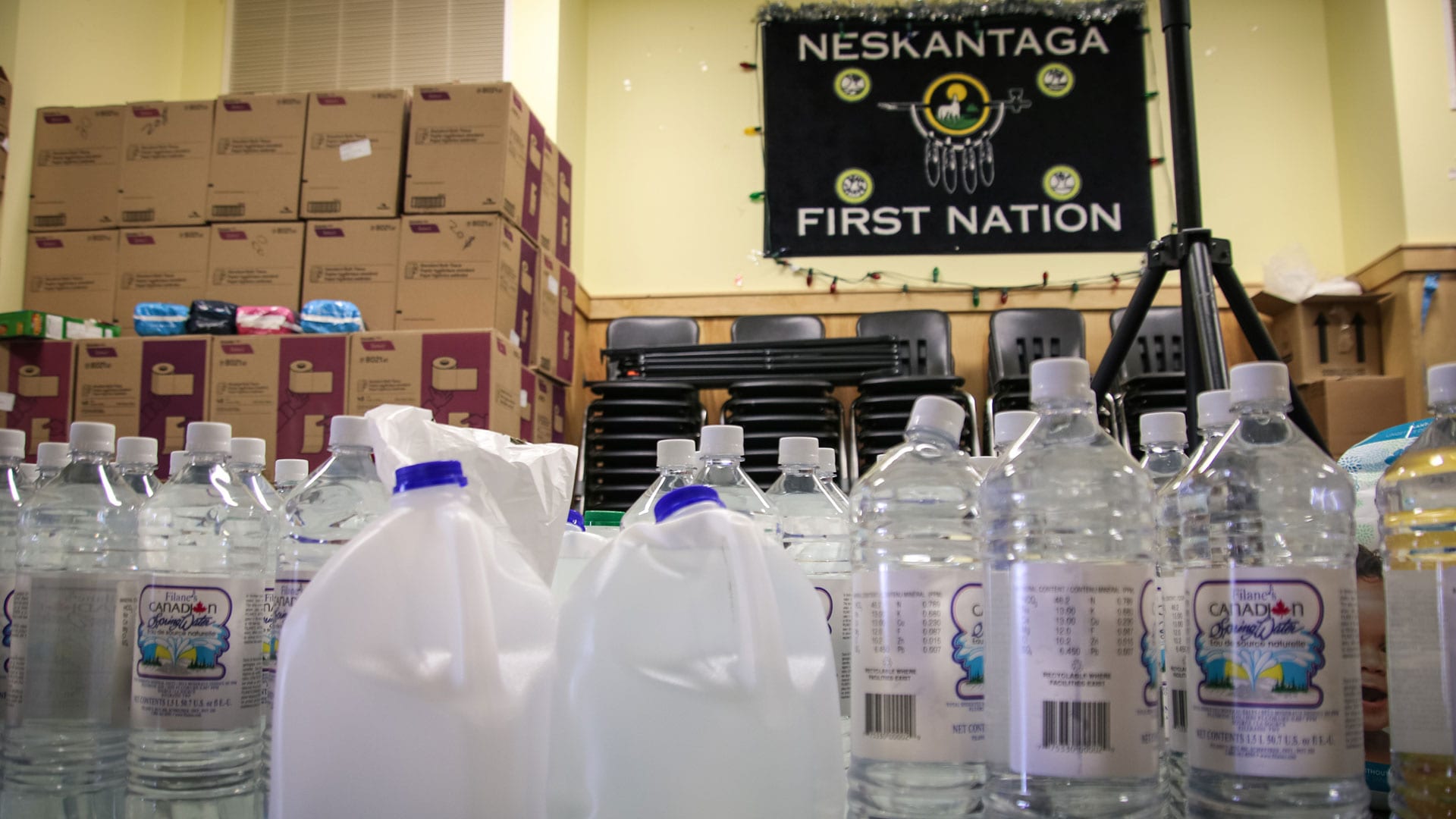
The federal government typically has a representative on the project team when construction gets underway, and the department usually controls the release of funds as contractors meet specific reporting requirements.
But guidelines that enable short term savings, such as not requiring back-up power, can lead to higher costs in the future. If a project falls short, it can take years to obtain approval for an upgrade.
Twenty-eight water operators told the consortium that their systems were missing backup power for a range of reasons, including poor work by contractors and engineers.
According to a public presentation given by an ISC employee in 2019, a significant portion of drinking water advisories on First Nations are caused by power outages, which can impact stores of treated water and reduce pressure.
Craig Baker, the general manager at First Nations Engineering Services Ltd., said, “The whole idea [is] that they’re trying to save a nickel. […] I’m shaking my head.”
Baker added in a subsequent interview that he believes new projects include backup power.
In 2009, construction was completed on new water and wastewater systems in the Nipissing First Nation community of Garden Village, west of North Bay, Ontario. The facilities received $14 million in federal funding and $2.1 million from the community.
Chief Scott McLeod said it was flagged at the beginning of construction that the plant wouldn’t be able to treat the volume of water that was flowing through the system. ISC and the First Nation agreed to move forward with construction on the understanding that the plant’s design would be adjusted along the way, but that never happened.
He likened the situation to “putting a four-cylinder engine into a three-quarter-ton truck.”
He said water quality “is teetering on the edge” of what’s acceptable because of high trihalomethane levels—a by-product of the water treatment process that some studies have linked to cancers and complications during pregnancy.
Twelve years later, the community is working on a plan to retrofit the plant, but what would have cost at most $3 million to address at its time of construction will now cost $10 million, McLeod said.
“I can move off the reserve a mile from here and West Nipissing doesn’t have the same problem. And if they did, it would be fixed, right? So when we talk about systematic racism, that’s what we’re talking about,” he said.
Local control
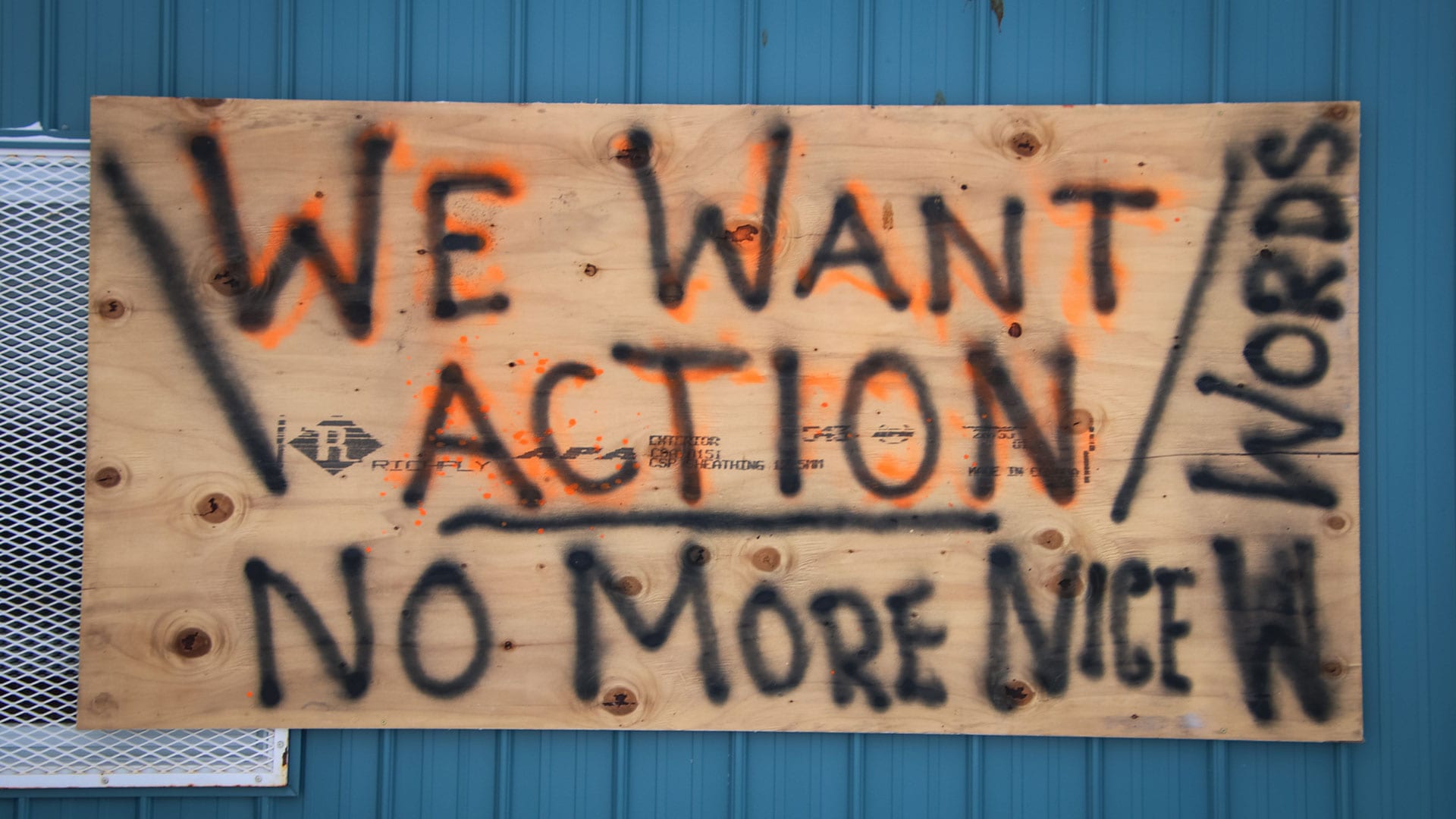
In June 2020, a new Atlantic First Nations Water Authority (AFNWA) signed an agreement with the federal government that establishes a framework for negotiations that’ll eventually lead to the transfer of responsibility over water and wastewater services.
The organization is aiming for “full autonomous First Nations-led operation” by the spring of 2022, providing water and wastewater services to more than 4,500 households and businesses on reserves across the Atlantic region.
“We’re not just talking about today’s issue,” said Carl Yates, the AFNWA’s interim CEO. “It’s making sure you put things in place so your grandchildren will also inherit a good system.”
While various initiatives such as this one are underway to improve local control, Morrison, the band manager from Mitaanjigamiing, suggests government officials have a lot of work to do.
“Racism is not just me calling someone a derogatory comment just because of their ethnic background or the way they look or the colour of their skin,” Morrison said. “It’s actually the policies and procedures also that are being implemented by the provincial and federal government.”
Files from Michael Wrobel, Annie Burns-Pieper, Patti Sonntag, Mike De Souza, Emma Wilkie, Brittany Hobson, Priscilla Wolf, Andrew Russell, Laurence Brisson Dubreuil, Erica Endemann, Declan Keogh, Krista Hessey.
Clean water, broken promises” is a collaborative investigation into obstacles First Nations are encountering during the Trudeau government’s push to ensure communities are able to deliver clean drinking water to residents. We will be releasing our articles and broadcasts from this series over the coming weeks.
For tips on this story, please contact the reporters at: iij.tips(at)protonmail.com
This article is a compilation of reporting by students and journalists at colleges, universities and media companies nationwide. See the full list of “Broken Promises” series credits here, and more information about the consortium here.
This article is a compilation of reporting by students and journalists at colleges, universities and media companies nationwide, including:
Carleton University, Concordia University, First Nations University of Canada, Humber College, University of Regina, MacEwan University, Mount Royal University, Université de Québec à Montréal (UQAM), University of British Columbia, University of King’s College.
Produced by the Institute for Investigative Journalism, Concordia University.




